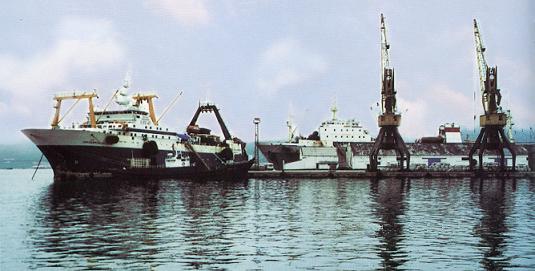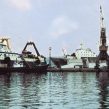
Strategic Implications of China’s Access to the Rajin Port
Publication: China Brief Volume: 10 Issue: 6
By:

At the recently concluded National People’s Congress (NPC), Chinese Communist Party (CCP) Deputy Secretary-General of the Yanbian Korean Autonomous Prefecture in Jilin Province, Li Longxi, announced that North Korean authorities are currently studying a proposal to grant a 10 year extension to China’s lease of Rajin Port, which is located strategically on the border of North Korea and Russia, close to the mouth of the Tumen river basin and the Sea of Japan. According to Deputy Party Chief Li, “China gained rights to Pier 1 [at Rajin Port] in 2008, and is now in negotiations with North Korea over extending those rights for 10 years.” If Pyongyang agrees to the proposed extension, China will have exclusive access to Pier 1 at the Rajin Port until 2028 (NK Brief, No.10-03-11-10; Korea Herald, March 9). While mainstream Chinese-media and analysts took pain to emphasize the economic rationale behind the proposed agreement, China’s long-term access to the Rajin Port—which offers China its long coveted access to the Sea of Japan—underscores an ongoing trend that indicates Pyongyang’s growing dependence on Beijing and in turn Beijing’s long-term commitment to Pyongyang. The proposed agreement—which was delivered on the heels of an announcement that North Korea was leasing another pier at the port to Russia for 50 years—will bolster Chinese presence in the region as well as increase commercial traffic in the relatively quiescent Sea of Japan. These developments, among others, have stirred regional concerns particularly from South Korea and Japan over the strategic implications of growing Chinese activities in the region (Xinhua News Agency, March 10; Beijing Youth Daily, March 10; Chongqing Business News, March 12).
Although North Korea shares a border with China along most of the former’s northern boundary (demarcated by the Yalu and Tumen rivers), the last 17 kilometers of the Tumen river marks the boundary between North Korea and Russia (not China), which has deprived the Chinese of a navigable outlet to the Sea of Japan for the last century. China’s lack of access to the Sea of Japan has also created a bottleneck for the economic development of its landlocked Northeastern provinces (i.e. Jilin and Heilongjiang provinces), which does not have immediate access to a nearby seaport for transporting and exporting its goods (i.e. coal, timber, etc.). Moreover, China’s lack of access to the Sea of Japan has consequently limited its maritime operations in the region.
According to the official-North Korean Central News Agency (KCNA):
“The [Rajin] port can accommodate eight 10,000-ton vessels and five 5,000-ton vessels at one time. The total plottage [sic] of the port is 380,000 square meters, the freight transit capacity is 4 million tons and the freight storage capacity is 100,000 tons … In the future, four wharfs will be built in the southwest direction. They will deal with 200,000-ton vessels and above 20,000-ton vessels, 36 at the same time. The traffic capacity will reach 50 million tons in the 2010s and 100 million tons later” (KCNA [North Korea], March 12).
The year-round ice-free port reportedly has five piers, 10 berths, a cargo-storing area that is 203,000 square meters, storage area that is 26,000 square meters and a warehouse area that is 177,000 square meters. Furthermore, the port is only 52 kilometers away from public roads along the Chinese border (Daily NK, March 24, 2006; NK Brief, No.10-03-11-1; Blog.huanqiu.com).
In the past year, the Chinese have invested millions of yuan (renminbi) for infrastructure renovations of Pier No. 1. According to a statement posted on the Yanbian local government’s website in February, the Chuangli Group, based in Dalian, Liaoning Province, invested 26 million yuan ($3.8 million) in 2009 to renovate parts of Pier No. 1 and constructed a 40,000-square meter warehouse at Rajin Port (Global Times, March 10). These developments have taken place largely beneath the radar screen of most Western analysts. Although details of the new agreement are unavailable, according to one account of the new lease agreement, “China can choose what facilities it wishes to utilize and where to build them as it sees fit” (2point6billion.com, March 9).
As official Chinese-media heap praises the economic benefits of the proposed agreement, some commentaries that appear on the Chinese web have a different interpretation of the proposed agreement, which looks at it through a strategic lens. They argue that the port access agreement was a breakthrough for Chinese strategy to completely bypass the “first island chain,” which includes the Yellow Sea, the East China Sea and the South China Sea, which Chinese analysts see as a U.S. containment strategy of China (Chongqing Business News, March 12).
According to a Global Times report that cited an anonymous source, China has long been "pinned down" by the United States in the Sea of Japan through the latter’s alliances with South Korea and Japan. In the face of China’s rise, the source asserted that the United States has responded by strengthening its alliances with Japan and South Korea to further contain China’s peaceful development, and so China’s presence in the Rajin Port will allow it to challenge U.S. strategic interests in this region (Xinhua News Agency, March 10).
South Korea’s foreign ministry said it is “closely watching” the agreement. “The North Korea-China agreement will have a big impact on geopolitics in the region,” the South’s Yonhap news agency said. Mikyoung Kim, a North Korea expert at the Hiroshima Peace Institute in Japan, said: “China has a very strong navy … Now, with China’s direct access to the Sea of Japan, Japan feels pinched in the region” (The National, March 13).
A plausible future scenario given the large capacity of Rajin Port and its strategic location in the Sea of Japan is that this facility could provide China with an access point to the Arctic via the La Perouse Strait. While China does not have a direct claim to the Arctic, Chinese leaders are beginning to assert their interests in the Northern region. At the Third Session of the Eleventh Chinese People’s Political Consultative Conference (CPPCC), Former President of the Chinese Naval Strategy Institute Rear Admiral Yin Zhuo advised Chinese leaders not to fall behind on Arctic Ocean exploration. According to Rear Admiral Yin’s argument, “The United Nations Convention on the Law of the Sea (UNCLOS), the North Pole and surrounding area are the common wealth of the world’s people and do not belonging to any country.” Yin even criticized some countries of infringing upon other nations’ interests by contesting for sovereignty over the region, which reportedly has 9 percent of the world’s coal and a quarter of the global untapped oil and gas, together with abundant diamond, gold, uranium, and other resources. Yin proposed to establish a cross-agency national commission focusing on maritime strategic planning. Further, the Rear Admiral recommended that strategy planning should be segmented based on 5 to 10 year plans, with both short term and long terms goals (China News Service, March 5).
In the final analysis, China’s direct access to the Sea of Japan—at least right now— does not present a challenge to U.S. interests in the region. Yet as the Chinese military continues to modernize and its interests expand, this dynamic will have far-reaching implications for the United States, Japan and South Korea, and the broader region as a whole. Furthermore, as China develops the capabilities that could challenge the predominant power, United States, in all theatres within the first island chain, it may become more willing do so. Whether current trends will change the balance of power in Northeast Asia remains to be seen, but much depends on China’s strategic intent, which can only become clearer in time. Nevertheless, through the inking of the lease agreement, it appears that China (and Russia) is increasing its long-term stakes in preserving the stability of the current North Korean regime.





